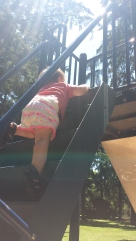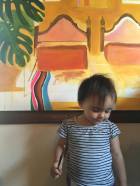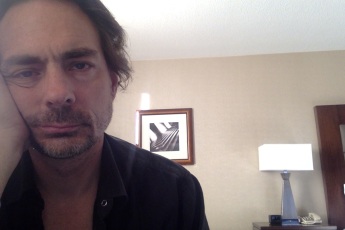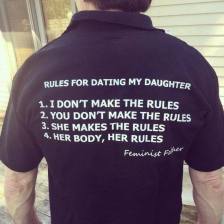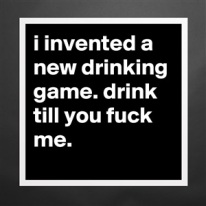June 15, 2016

On Monday afternoon I was walking along the Mall in Washington, DC, looking at all the flags at half mast in remembrance of the massacre in Orlando. It was powerful to see our nation’s capital honoring 49 people killed in a gay club. But I don’t think the weight of the thing really hit me until the following day. I was listening to a story on NPR about how the city had hired Spanish translators to explain to the parents of some of the victims, who had been killed at “Latin Night” at Pulse, the city’s biggest gay club, what had happened to their children. Many of the parents were confused at why their “straight” child had been at a gay bar. The fact that the victims had to come out after their murder was like an emotional sledgehammer. Such a common story.
I could talk all day about the shooter and the reactions from the bitterly gun-obsessed, Islam-hating right-wing narrative inventors. But I want to talk about the crime scene. More specifically, the importance of the gay bar in America.

Friday will be the one year anniversary of the mass shooting in Charleston, South Carolina where another hate-filled man killed nine black worshipers. A black writer that I admire (I can’t remember who), penned a piece about the meaning of the racist killer invading a space that was sacred to many African Americans in more ways than one. The black church is historically a sanctuary from the racism outside the church doors, a place to be in the majority and bond over common struggles. Dylan Roof invaded a safe space that had been invaded many times before.
Omar Mateen did the same thing.
As a kid in rural Georgia, there were stories about gay bars in places like San Francisco and New York City. (We didn’t know about the Stonewall Inn, just Lou Reed’s “Walk on the Wild Side.”) It wasn’t until, at age 16, I started going into downtown Atlanta to hang out in punk rock clubs, like 688, that I discovered the thriving underground world of Atlanta’s gay bars. When the rock clubs closed at around 2 am we had a few options; Krispy Kreme on Ponce de Leon Avenue (“Hot Doughnuts Now”), the Majestic Diner, also on Ponce (“We never close but we’re often rude”) or the gay dance bars that seemed to serve drinks until dawn.
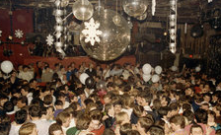
In the early 1980s, that was mainly Backstreet in Midtown, set back far enough from Peachtree Street that it felt like a secret mission just to find the door to get in. I first went with a bunch of friends in 1981. I was 17 and still schooled in the homophobia of the South but also aware that I never fit in that Southern culture. It didn’t take long to learn that the “queers” were a part of my tribe of misfits. That was the beginning of the end of my homophobia.
All I knew was that the cool kids were at the gay bar, dancing to Two Tons of Fun or Grace Jones, smoking cigarettes and bitching about rednecks. That first night I was sure I was gonna get hit on as I entered the door with my crappy fake ID. By the time I left I wondered why I didn’t get hit on. Did I not rate? I felt insulted but welcomed at the same time. One one hand we were the straight crowd invading somebody else’s space but I always got the feeling that it was appreciated that we were loose enough to be there without starting some stupid shit.
It felt dirty and dangerous and liberating. It was clear people were risking life and limb to be there, to find a community in the shadows. There were cops and hustlers and straight thugs and repressed thugs all itching for a chance to play Smear the Queer right outside of the bar’s door. Just a block away, “straight” men from the suburbs and the sticks were cruising Juniper Street for a quick gay hook-up. (Georgia license plates have the county of registration on them so when you saw Mr. Coweta County on Juniper, you knew what was up. They just kept it on the down low.) There was an air of constant danger. And my mother always thought I was staying over at a friend’s.
Maybe most important was the simple fact that people there could be who they actually were. So many LGBT people are forced into double lives. Their true sexual selves and the persons their religion or community demands they must be. This was certainly true of the 1980s Bible Belt and I am quite sure it was the case for Omar Mateen. For many, all they had or have is the gay bar on a Saturday night and then it’s back to the big lie Sunday morning. You felt like you were in an oasis of sanity and disco lights.

But it was in those clubs that a movement from the fringe to the mainstream was born. Like at Stonewall in 1968 and Pulse in 2016. This was the flash before AIDS changed so much. It became the routine to see the Now Explosion (Atlanta’s even gayer B-52s) perform at 688 then follow the crowd, Ru Paul leading the way, to Backstreet or Weekends, and dance until our legs gave out.
I’ve written about how I worked at the Turtles Records in Ansley Mall next to Piedmont Park (where it was more than rumored that gay men were having sex in the bushes). I thought I’d ask co-worker Ronnie Holland what those days were like. In many ways he my translator of Southern gay culture in the early 80s.

Backstreet was a safe haven. It didn’t feel safe getting there, in the early days of 79/80, we would park off site on the side streets cause we didn’t want the police to get our tag numbers and the streets weren’t particularly safe either, but once we got inside, it was total freedom. You were accepted, regardless. Now, that didn’t mean there wasn’t attitude and cattiness and cliques, but everyone just dealt. To have grown up thinking you were different and strange and somehow wrong, and not ever being able to talk to anyone about it, to find a “tribe” of people who had similar experiences was “otherworldly”. You didn’t have to explain the journey, it was a common one.
I would have to say that, for my group, the bonding was intense. Drugs probably helped with that, but the experience of being in a group of people on the dance floor with the music building to a frenzy and everyone being a part of the same experience, was very similar to a sort of “religious” frenzy. The music and the closeness of the bodies and people losing inhibitions and the lights and the joy……I can see how people would feel a comparison to a church like experience. It became tribal and transcendental. You lose yourself into the group.
The gay club became an extension of our underground scene and it grew as the climate evolved. By the 1990s, Ru Paul was hosting events at Velvet, a club in the heart of downtown. But it was never completely safe. In 1973, a gay club in New Orleans was the target of an arson attack that killed 32 patrons. In Atlanta it was the bombing of The Otherside Lounge on Piedmont Road in 1997. The lesbian bar was the targeted by Olympic bomber Eric Rudolph, a “Christian patriot” who used a bomb full of nails to maximize the carnage. Fortunately, no one was killed but the terroristic message was clear. You can’t even feel safe in your safe spaces.
I was listening to Washington Post writer Justin Torres talk about the Orlando shooting two days afterwards. His first thought on seeing the news was, “Oh, my God. These are my people.” Then he spoke, in almost reverent terms, of the gay club severing as a “queer church” that rejuvenates souls. “So when you walk into the club, if you’re lucky, it feels expansive. Safe space is a cliche, overused and exhausted in our discourse, but the fact remains that a sense of safety transforms the body, transforms the spirit. So many of us walk through the world without it,” he said.
To have your church attacked by someone who had been welcomed into it with open arms, just like what happened in Charleston a year ago, is a deep wounding that cannot heal easily. Where can you feel safe if not there? And for every big city gay club with armed security (a lot of good that does) there is a small town gay bar hoping to survive a firebombing or having its patrons followed home and harassed. Can a brother and/or sister just have a drink in peace?
I have a friend named C. Ray Borck. Besides being a much loved sociology professor, he is transgender and came of age in the gay clubs. He posted a powerful homage on Facebook to those clubs less than 12 hours after the news about Orlando broke, writing:

I have been remembering the countless nights I’ve spent in gay clubs, especially the Latinx ones, and I keep discovering moments of solace in the memories and magic of those places, as early as last week on Cherry Grove. A gay dance party is always a good time. The sexy lighting and incessant beats. Excessive drinking and cigarettes after everyone else had kids and quit. Loud fashion and incisive wit. Watching men be tender with each other and feeling like that’s the revolution. Sweating and yelling and laughing. Telling coming out stories, stories about our youths and our parents, our backwards communities and schools, having found each other in the city streets.
I didn’t need the gay bar because my heterosexuality was celebrated in every corner of my world. But I did need the gay bar for other reasons. Not because it was a “safe space” for “gender non-conforming” kids like me and my punk rock gang. Yes, we were the target of gay-bashings as well. (A guy once drove up next to my car on Piedmont Road and said, “You look like a fag from England,” and then started whacking my Gran Torino with a 2 X 4). We needed it for our friends so they could simply have a space to breath and dance and not be “gay,” but be human beings. Some were gay outside the club and some did their best performances of a “heterosexual lifestyle,” but the either way, their guard was always up. That must be why those clubs are open so late. Just one more dance, please. One more song before I have to again hear how gay people are going to burn in hell or that gay people need to be killed. And make it the extended disco mix.
Wherever your local gay bar is, you don’t have to patronize it but protect it. People you love need to be able to breathe.


